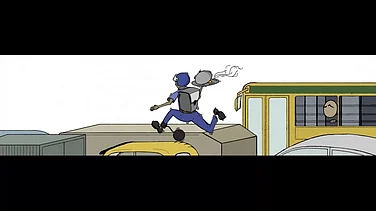With the guns falling silent along the Line of Control (LoC) in Kashmir following peace talks between India and Pakistan, there is hope and excitement in the nearby areas. Since February 25, when the ceasefire agreement was announced, there has not been a single incident of cross-LoC firing or shelling. Schools have reopened in areas close to the LoC and, in the interiors of the Valley, white instead of the familiar red-and-black is the colour of the flags atop army vehicles on the move. “We hope the governments of India and Pakistan would soon resume travel and trade between the two countries,” says Pawan Anand, president of the Cross-LoC Traders Association, Poonch. “We are in touch with the cross-LoC traders from across the border and they say their government is preparing for restoration of trade. We are also prepared to resume trading whenever our government takes a decision about it. Before that, however, the government should bring changes in the SOP for plugging all the loopholes.”
The Barter Dividend Of LoC Respite
Will rice, turmeric and red chillis cross the Jhelum again, instead of guns? Cross-LoC trade still needs a few security loopholes to be plugged, but peace is stirring.

Cross-LoC trade was seen as a ‘confidence-building measure’ (CBM) and a step towards resolution of the conflict over Kashmir. Many believe its suspension on April 9, 2019, on the grounds that the trade routes were also being used for smuggling illegal weapons, -narcotics and fake currency, was part of the build-up towards abrogation of Articles 370 and 35A in August that year. On April 7, 2005, then PM Manmohan Singh had flagged off the Karwaan-e-Aman (peace caravan), the first cross-LoC bus service connecting Srinagar and Muzaffarabad, and on October 21, 2008, cross-LoC trade was permitted across two routes—Salamabad (Uri)-Muzaffarabad and Poonch-Rawalakot. Traders were allowed to exchange 21 mutually agreed items. When the first truck carrying rice, turmeric and red chillies crossed the Jhelum via the Kaman Aman Setu bridge and reached Uri, it generated hope for peace in Kashmir. In 2019, however, citing probes by the National Investigation Agency, the home ministry claimed in a press release that “persons closely -associated with banned terrorist organisations involved in fuelling terrorism/separatism” and “some individuals who crossed over to Pakistan and joined -militant organisations” were operating “a significant number of trading -concerns engaged in LoC trade”.
“Foolproof measures surely need to be put in place to ensure transparency, but resumption of cross-LoC trade will -indeed give a fillip to the J&K economy in these times when the COVID-19 -pandemic has slowed down economic activities, leading to large-scale unemployment,” says Hilal Ahmad Turkey, chairman of the Cross-LoC Traders Association, Kashmir.” Afaq Hussain of the New Delhi-based Bureau of Research on Industry and Economic Fundamentals (BRIEF) says Rs 7,500 crore worth of cross-LoC trade was -recorded between 2008 and 2019 -despite intermittent suspensions and ceasefire violations. “It generated more than 1,70,000 job days and Rs 90.2 crore was paid to labourers, besides freight revenue of about Rs 66.4 crore for -transporters in J&K,” he says. “These numbers may be only a minuscule part of India’s overall economy, but the imp-act of such CBMs goes bey-ond standard metrics. The cases of thriving businesses and -reunited families on both sides stand testimony to the efficacy of cross-LoC trade and the bus service.”
By Naseer Ganai in Srinagar
-
Previous Story
 Global Vaccine Research Collaborative Could Pave The Way For Faster Pandemic Response
Global Vaccine Research Collaborative Could Pave The Way For Faster Pandemic Response - Next Story


















